Annals of Mathematics and Physics
Study of the effect of multiple phase transformations and relaxation annealing on the microstructure of a martensitic TiNi alloy in different structural states
Anna Churakova1,2* and Elmira Iskhakova1,2
2Ufa University of Science and Technology, 32 str. Zaki Validi, Ufa, 450076, Russia
Cite this as
Churakova A, Iskhakova E (2023) Study of the effect of multiple phase transformations and relaxation annealing on the microstructure of a martensitic TiNi alloy in different structural states. Ann Math Phys 6(2): 173-179. DOI: 10.17352/amp.000098Copyright Licence
© 2023 Churakova A, et al. This is an open-access article distributed under the terms of the Creative Commons Attribution License, which permits unrestricted use, distribution, and reproduction in any medium, provided the original author and source are credited.The work was devoted to studying the effect of multiple phase transformations in the temperature range of phase transformations of a TiNi alloy with a martensitic structure in various initial states - coarse-grained, ultrafine-grained, nanostructured. The conducted studies have shown that in the process of thermal cycling, the accumulation of defects in the crystalline structure occurs - dislocations, which contribute to a decrease in the size of structural elements. Subsequent relaxation annealing, slightly reducing the dislocation density, made it possible to obtain a stable and more equilibrium microstructure, including the nanostructural state.
Introduction
The most common Shape Memory Alloys (SMA) are alloys based on TiNi (titanium nickelide). They have a unique set of properties - high values of recoverable strain and developable stress, high corrosion resistance, due to which they are widely used in many industries and medicine [1-5]. At the same time, for many applications, especially in critical or small-sized products, the level of mechanical and functional properties of TiNi alloys in the usual coarse-grained state is insufficient. It is known that physical and mechanical properties are structure-sensitive, so to improve them, methods of deformation and heat treatment are used to obtain various types of structures. To solve this problem, various metallurgical and metallurgical technologies are also developed, new alloys and technologies of their processing are created, systematic study of structural and phase transformations in them, various properties, including thermomechanical effects unique in their temperature, deformation, and force characteristics, memory [6]. When developing products from alloys with MSP, the following functional characteristics are the most important: temperature interval of shape recovery, maximum fully reversible deformation, degree of shape recovery, similar characteristics of reversible shape memory and Superelasticity (SE) [6].
Heat treatment of alloys of this system requires high precision, as it significantly affects the properties. In addition, it is one of the main means of accurately controlling phase transition temperatures. The duration and temperature of heat treatment affect the separation of the various nickel-rich phases and thus determine the amount of nickel in the crystal lattice; by depleting the nickel matrix, heat treatment leads to higher phase transformation temperatures. Combined strain treatment is the main means of controlling the properties of this alloy [7]. Thermal Cycling (TC) is a technique used to further improve the strength properties of some alloys [8,9]. The main factor that improves the characteristics of alloys during thermal cycling is the increase in the density of defects that are sources of internal stresses [10]. One of the first works devoted not only to structural studies but also to the mechanical behavior of TiNi alloys during thermal cycling [11]. It is found that multiple martensitic transformations increase the yield strength, thus also determining the functional properties of TiNi alloy. The effect of saturation of strength parameters in this work is found at 20-30 cycles, and further cycles do not change the behavior of the material. In addition, it is shown that alloys with high Ni content are less prone to phase hardening during thermal cycling. In the case of Coarse-Grained (CG) TiNi, during numerous cycles of martensitic transformations, there is a slight increase in the dislocation density, which is accompanied by a small change in the temperature of martensitic transformation and some increase in the yield strength under mechanical action [9]. However, "phase hardening" because of the thermal cycling of TiNi is insignificant [9]. Thermal cycling of TiNi alloy in the incomplete temperature range of martensitic transformations has shown that during cooling the growth of martensitic plate is accompanied by plastic accommodation, which leads to the accumulation of defects both in transformation zones and in austenitic volumes. of the alloy that does not experience phase transition [12-15]. The change in defect density does not depend on the volume fraction of these regions and occurs already at the initial stages of direct transformation.
During heating, softening occurs, which contributes to the change and redistribution of defect density and affects the change in reverse transition temperatures [12-22]. The degree of de-strengthening depends on the volume fraction of the alloy undergoing reverse martensitic transformation, the maximum temperature in the cycle, and the rate of thermal cycling [23]. In TiNi alloys, the transformation of B2 to B19' is characterized by lattice strain incompatibility [10], which contributes to the appearance of local stresses at the phase boundary, and stress relaxation leads to the accumulation of plastic deformation and, consequently, irreversible changes in the kinetics of martensitic transformations during each thermocycling cycle [10]. It is known that materials in the ultrafine-grained (UFG) and nanostructured (NS) states are characterized by an increased specific grain surface area [10]. The influence of high grain boundary density in cyclic martensitic transformations is currently poorly understood. And since the temperatures of martensitic transformations of TiNi system alloys, compared to other materials undergoing phase transformations (steels, titanium alloys, etc.), are much lower and close to room temperature, which excludes the recrystallization processes of UFG and NS. Structures, they are ideal materials for studying the influence of CG, UFG, and NS states on hardening and processes of structural and temperature changes [10]. Grain boundaries can be both nucleation sites for dislocations during martensitic transformation and sinks for them, and, consequently, phase hardening during thermal cycling in the TiNi UFG can be enhanced. On the other hand, in the TiNi UFG, the martensitic plates are confined to a single grain of much smaller size than in the CG state, which can reduce the internal stresses during the growth of martensitic twins. This can lead to a decrease in the intensity of dislocation generation in the heating-cooling cycle in the material with a UFG structure. In this connection, it is of interest to determine the influence of the initial grain size/structural elements (CG, UFG, and NS obtained by the method of this work by combining ECAP and upsetting) on the thermal cycling processes and the associated structural changes. Despite the fact that publications have been devoted to the study of the influence of thermal cycling and annealing, most of them are focused on alloys with a high Ni content, since these alloys are aging and hardening Ti3Ni4 particles released in them. This study is aimed at studying the effect of low-temperature annealing after multiple martensitic transformations in an alloy of equiatomic composition, where annealing does not lead to the release of particles and decomposition of the solid solution. It is of interest to use such low-temperature annealing in the form of a relaxation process, which allows, while maintaining a sufficient dislocation density, to increase the stability of the structure and properties of the TiNi alloy. In addition, compare the effect of such annealing on an alloy with different initial microstructures - coarse-grained, ultrafine-grained, and nanostructured.
Materials and methods
The study material was a two-component alloy: Ti50.0Ni50.0 alloy, that has a B19’ martensite lattice at room temperature. Quenching of TiNi alloys is held at a temperature of 800 ºС for an hour in a Nabertherm furnace, followed by rapid cooling in water. This heat treatment was used to eliminate chemical segregation in alloys and the influence of pretreatments. After quenching, the samples were deformed by Equal-Channel Angular Pressing (ECAP) according to the Bc mode (6 passes) at T = 450 °C. In this case, upsetting was carried out on a PA2634 hydraulic press at the Central Collective Use Center "Nanotech" UUST. Precipitation was carried out at 30% at room temperature. For quantitative and qualitative analysis of the microstructure of TiNi alloys, an OLYMPUS GX51 metallographic microscope was used. The surface of the samples in the states under study was subjected to mechanical grinding using abrasive paper of various grain sizes and polishing on MD-Chem cloth with a colloidal silicon suspension of 0.04 μm. To reveal the microstructure of the initial titanium nickelide, an etchant of the following composition was used: 60% H2O + 35% HNO3 + 5% HF. Annealing of the TiNi alloy was carried out at a temperature of 150 ºС for one hour and 17 hours, followed by cooling in air. The method of thermal cycling or multiple martensitic transformations of samples of TiNi alloys with different microstructures consisted of cooling the samples to a liquid nitrogen temperature of -196 ºС and heating to a temperature of 150 ºС; for these materials, this mode ensures the occurrence of martensitic transformations. Samples were heated on an IKA C-MAG HP 7 plate with additional control and temperature fixation using a thermocouple. The number of thermal cycles "heating - cooling" ranged from 0 to 100. The exposure time was t=8 min to ensure complete heating/cooling of the samples. Samples of the following states were taken for the study: n=0, 20, 50, and 100 cycles of thermal cycling [21]. Fine structure studies were carried out in a JEM-2100 Transmission Electron Microscope (TEM) at an accelerating voltage of 200 kV in the magnification range from 8000× to 150000×, obtaining bright and dark field images, as well as microdiffraction patterns. Foils for electron microscopy studies were prepared on a TenuPol-5 setup according to the standard procedure using an electrolyte of 10% HClO4 + 90% CH3(CH2)3OH. Structural studies of samples after corrosion tests were carried out using a scanning electron microscope (SEM) JEOL JSM-6490LV.
Results
In the initial Coarse-Grained (CG) state, the selected Ti50.0Ni50.0 alloy at room temperature has an equiaxed B19’ martensite structure. The average grain size (Figure 1a) was determined in the GrainSize program using the secant method, which is 35 ± 2 µm. With the help of optical microscopy (Figure 1b-d) and scanning electron microscopy (Figure 2b-d), it is not possible to accurately assess changes in the structure after multiple thermal cycles; the TEM method was used to study these states. In the initial coarse-grained state, according to the obtained TEM data, grain boundaries are visible free of dislocation clusters, the structure mainly contains equiaxed grains with an angle of 120 degrees - triple junctions (Figure 3a). After thermal cycling with a successive increase in cycles (Figure 3b-d), there is a change in the size of structural elements and accumulation of defects near the grain boundaries. An increase in internal stresses and distortion of the crystal lattice are observed. The average grain size at the maximum number of heat cycles, compared with the initial values, decreases monotonically to 28 ± 2 µm (Figure 3d). Conducted relaxation annealing at a temperature of 150 °C for 1 hour and 17 hours showed that there is a slight decrease in the density of defects at the maximum holding time, the boundaries of the initial austenite grains and the twin martensite boundaries become clearer and more balanced (Figure 3e,f).
After ECAP, an Ultrafine-Grained (UFG) structure with a high dislocation density is formed in the TiNi alloy. The method of optical metallography fails to reliably estimate the grain size of the UFG structure (Figure 4a-d), since only deformed regions of different contrast are observed. In this regard, studies were carried out using the TEM method, and the evaluation of structural elements was carried out by calculating the average grain size using the secant method. The Ti50.0Ni50.0 alloy has a martensitic structure; after ECAP, the size of the austenite grain decreases and the length of the martensite plates coincides with it, while the average width of the martensite plates is hm = 250 ± 15 nm (Figure 5a). The grains are elongated in the direction of deformation. As a result of thermal cycling, the density of dislocations increases (Figure 5b,c). The accumulation of dislocations predominantly occurs at grain boundaries, while the size of structural elements after 100 thermal cycles decreases to 170 ± 15 nm (Figure 5d). Relaxation annealing does not lead to a significant change in the structure, the average size of structural elements is approximately 180 ± 10 nm (Figure 5e,f).
The cold upsetting of the sample by 30% after ECAP treatment led to an increase in the density of dislocations and the formation of deformation bands (Figure 6a) with an internal martensitic composition. The width of the bands and the size of the structural elements are within 155 ± 20 nm. Thermal cycling with the maximum number of cycles after additional upsetting led to an insignificant change in the grain size of 150 ± 15 nm (Figure 6b), in addition, grains with both equilibrium boundaries and nonequilibrium ones, with a high dislocation density and internal stresses, are observed in the structure (Figure 6b). Annealing after thermal cycling in the post-deposition state reduces the dislocation density and the structure becomes more balanced with an average size of structural elements of 140 ± 7 nm (Figure 6c,d). In some areas, martensite twins are observed in the nanometer range, but the analysis of this requires additional studies.
Discussion
This work presents the results of a study of the effect of low-temperature annealing on the microstructure of equiatomic TiNi alloy in coarse-grained, ultrafine-grained, obtained by equal-channel angular pressing, nanostructured, formed by ECAP and subsequent cold upsetting. The peculiarity of the work is that in previous studies annealing was carried out on alloys with a high Ni content [24-26], in which Ti3Ni4 particles can be released [27,28] and have a significant effect on the matrix [25-28], properties [29,30] and phase transformation temperatures [31,32], while in this study annealing was carried out in nonaging equiatomic alloy, as a relaxation process. The results obtained in this study suggest that with such a complex effect it is possible to increase the stability of the structure and, accordingly, the properties of the TiNi alloy in various structural states, including nanostructural state. Subsequent studies of the properties of the alloy after such treatment will allow us to evaluate this approach to increasing the stability of TiNi alloys.
Conclusion
As a result of thermal cycling in the Ti50.0Ni50.0 alloy, the dislocation density increases, internal stresses in the CG and UFG states increase, and the size of the structural components slightly decreases, which is associated with the formation of dislocation walls and sub-boundaries. Additional precipitation leads to an increase in the dislocation density and the formation of strain bands with the formation of a nanostructure with a size of 140 ± 10 nm. Relaxation annealing at a temperature of 150 °C for 1 hour and 17 hours after thermal cycling made it possible to preserve the ground structure with a smaller grain size than before thermal cycling but with a more balanced and stable structure.
The research was carried out at the expense of a grant in the field of science from the budget of the Republic of Bashkortostan for state support of young scientists (REC-GMU-2022, Agreement No. 1 dated 07/09/2023).
- Brailovski V, Prokoshkin S, Terriault P, Trochu F. Shape memory alloys: fundamentals, modeling, and applications. ETS Publ.: Montreal; 2003.
- Otsuka K, Wayman CM. Shape memory materials. Cambridge University Press: Cambridge; 1999.
- Khachin VN, Pushin VG, Kondratiev VV. Titanium nickelide, structure and properties. Nauka: Moscow; 1992 (in Russian).
- Miyazaki S, Imai T, Igo Y, Otsuka K. Effect of cyclic deformation on the pseudoelasticity characteristics of Ti-Ni alloys. Metall Trans. 1986; 17A:115-120
- Valiev RZ. Bulk nanostructured materials from severe plastic deformation. Progr Mater Sci. 2000; 45:103-189.
- Gunderov DV, Lukyanov AV, Prokofiev EA, Kilmametov AR, Pushin VG, Valiev RZ. Mechanical properties and martensitic transformations in the nanocrystalline Ti49.4Ni50.6 alloy produced by high-pressure torsion. Mater Sci Eng A. 2009; 503:75-77.
- Valiev RZ, Gunderov DV, Prokofiev EA, Pushin VG, Zhu Y. Nanostructuring of a TiNi alloy by SPD processing for advanced properties. Materials Transactions. 2008; 49(1):97-101
- Gunderov D, Lukyanov A, Prokofiev E, Churakova A, Pushin V, Prokoshkin S, Stolyarov V, Valiev R. Microstructure and mechanical properties of the SPD-processed TiNi alloys. Materials Science Forum. 2013; 738-739:486-490
- Liu Y, McCormick PG. Factors influencing the development of two-way shape memory in NiTi. Acta Metall Mater. 1990; 38:1321–1326
- Churakova AA, Gunderov DV, Lukyanov AV, Levedev YuA. Effect of thermal cycling in the range of B2-B19’ phase transformation on the microstructure and mechanical properties of UFG Ti49.8 Ni50.2 alloy. Letters of Materials. 2013; 3:166-168.
- Erofeev VYa. Phase hardening during martensitic transformation of titanium nickelide. FMM. 1982; 53(5):963-965.
- Günter VE. Titanium nickelide. Medical material of new generation. Tomsk: MITs Publishing House; 2006.
- Belosludtseva ES. Microstructure, thermoelastic martensitic transformations and properties of B2 alloys based on Ni-Mn / dissertation of the candidate of fiz.-mat. Sciences. Yekaterinburg, 2017.
- Pushin VG, Valiev RZ. And other Nickel-titanium alloys with shape memory / Ed. V.G. Pushina. Yekaterinburg: Ural Branch of the Russian Academy of Sciences; 2006.
- Gunderov DV. Investigation of the nature of high strength and plasticity of ultrafine-grained TiNi alloy obtained by equal-channel angular pressing. Deformation and Destruction of Materials. 2007; 10:13-21.
- Valiev RZ. Bulk nanostructured materials from severe plastic deformation. Progress in Material Science. 2000; 45:103-189.
- Tatyanin EV. Preparation of an amorphous TiNi alloy by shear deformation under pressure. FMM. 1986; 62(1):133-137.
- Pushin VG. Effect of equal channel angular pressing and repeated rolling on structure, phase transformations and properties of TiNi shape memory alloys. Materials Science Forum. 2006; 503-504:539-544.
- Stolyarov VV. Structural features, mechanical properties and shape memory effect in TiNi alloys subjected to equal channel angular pressing. Physics of Metals and Metal Science. 2005; 100(6):91-102.
- Pushin VG. On the nature of the abnormally high plasticity of high-strength titanium nickelide alloys with shape memory effects. Initial structure and mechanical properties. Physics of Metals and Metal Science. 2008; 106:537-547.
- Churakova AA, Gunderov DV. Transformation of the TiNi Alloy microstructure and the Mechanical Properties Caused by Repeated B2-B19′ Martensitic Transformations. Acta Metallurgica Sinica (English Letters). 2015; 28(10):1230-1237.
- Otsuka K. Physical metallurgy of Ti-Ni-based shape memory alloys. Progress in Materials Science. 2005; 50:511-678.
- Resnina NN. Functional properties of structurally inhomogeneous shape memory alloys based on TiNi / N.N. Resnina, Dissertation for the degree of Doctor of Physical and Mathematical Sciences, specialty 01.04.07 - Condensed Matter Physics // St. Petersburg: St. Petersburg State University; 2015.
- Karaca HE, Saghaian SM, Ded G, Tobe H, Basaran B, Maier HJ, Noebe RD, Chumlyakov Y. Effects of nano-precipitation on the shape memory and material properties of a Ni-rich NiTiHf high-temperature shape memory alloy. Acta Mater; 2013; 61: 7422–7431.
- Verlinden B, Humbeeck JV. Effect of grain size on aging microstructure as reflected in the transformation behavior of a low-temperature aged Ti–50.8 at % Ni alloy. Scr Mater. 2013; 69(7): 545–548.
- Wang X, Verlin Den B, Kustov S. Multi-stage martensitic transformation in Ni-rich NiTi shape memory alloys. Funct Mater Lett. 2017; 10: 1-8.
- Ryklina EP, Polyakova KA, Tabachkova NYu, Resnina NN, Prokoshkin SD. Effect of B2 austenite grain size and aging time on microstructure and transformation behavior of thermomechanically treated titanium nickelide. J Alloys Compd. 2018; 764: 626–638.
- Churakova AA, Kayumova EM. Microstructure and Mechanical Behavior of a TiNi Alloy during Multiple Martensitic Transformations and Annealing. Russ Metall. 2022; 727-734. https://doi.org/10.1134/S0036029522070035
- Li HF. Nanocrystalline Ti49.2Ni50.8 shape memory alloy as orthopaedic implant material with better performance. Journal of Materials Science & Technology. 2019; 35: 10. DOI: 10.1016/j.jmst.2019.04.026.
- Wang X. Improved functional stability of a coarse-grained Ti-50.8 at .% Ni shape memory alloy achieved by precipitation on dislocation networks. Scripta Materialia. 2019; 163: 57-61. DOI: 10.1016/j.scriptamat.2019.01.006.
- Yi X. The precipitation behaviors, martensite transformation, and superelasticity in the aged Ni-rich Ti-Ni alloy with the assist of super-high stress. Intermetallics. 2019; 104: 8-15. DOI: 10.1016/j.intermet.2018.10.015.
- Shelyakov A, Sitnikov N, Zaletova I, Tabachkova N, Andreev N. Effect of External Impacts on the Structure and Martensitic Transformation of Rapidly Quenched TiNiCu Alloys. Metals. 2021; 11: 1528. https://doi.org/10.3390/met11101528
Article Alerts
Subscribe to our articles alerts and stay tuned.
 This work is licensed under a Creative Commons Attribution 4.0 International License.
This work is licensed under a Creative Commons Attribution 4.0 International License.
 Help ?
Help ?

PTZ: We're glad you're here. Please click "create a new query" if you are a new visitor to our website and need further information from us.
If you are already a member of our network and need to keep track of any developments regarding a question you have already submitted, click "take me to my Query."
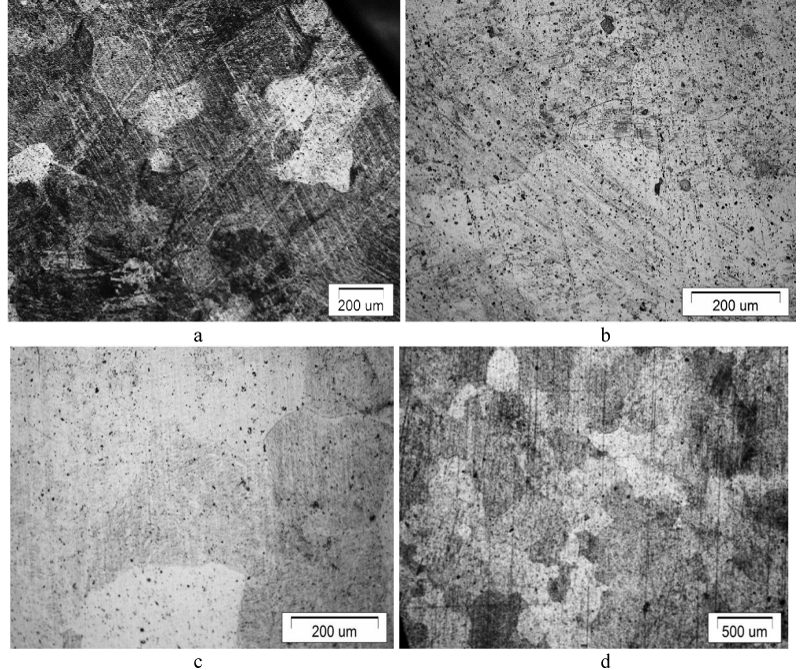
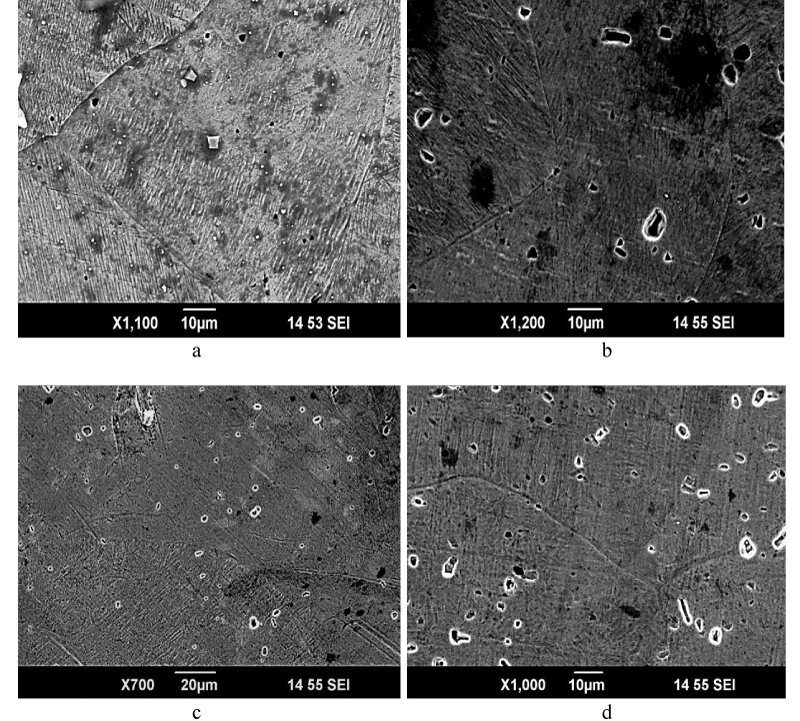
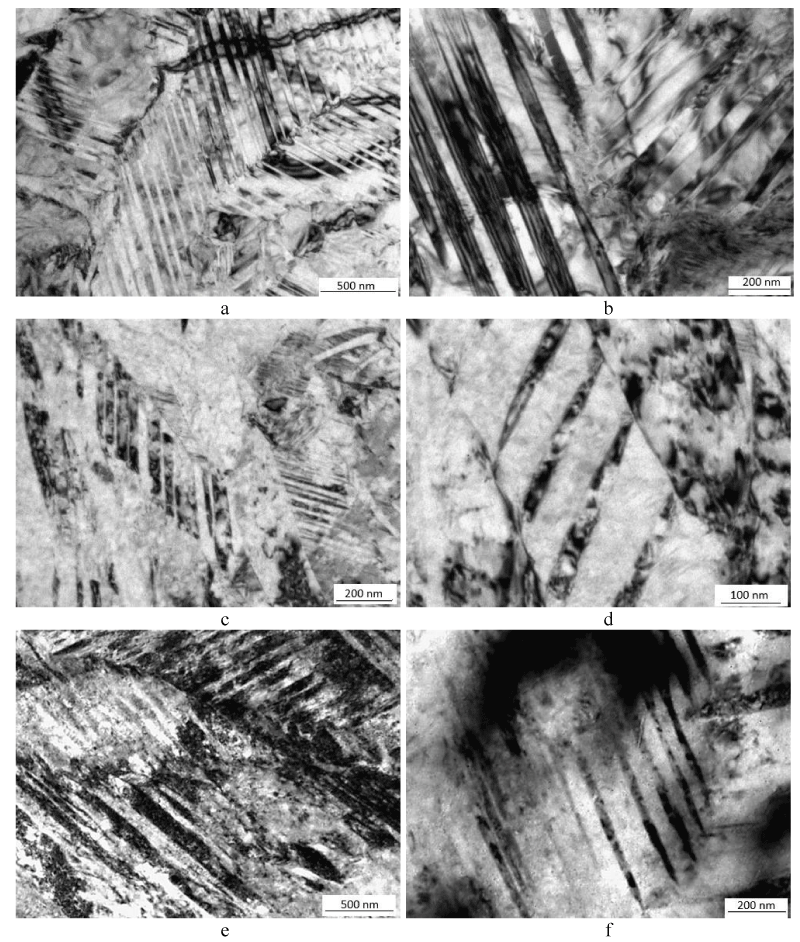
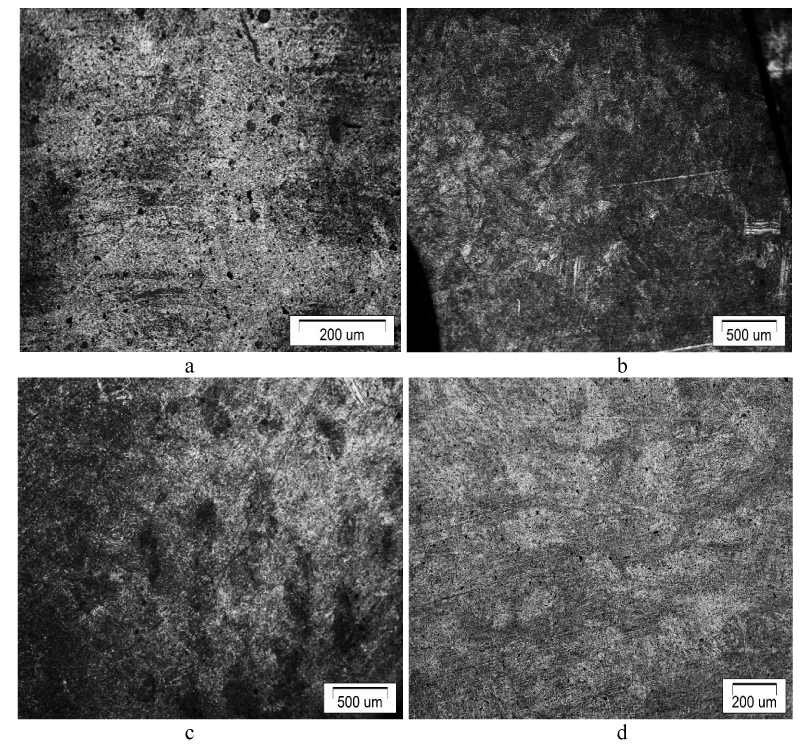
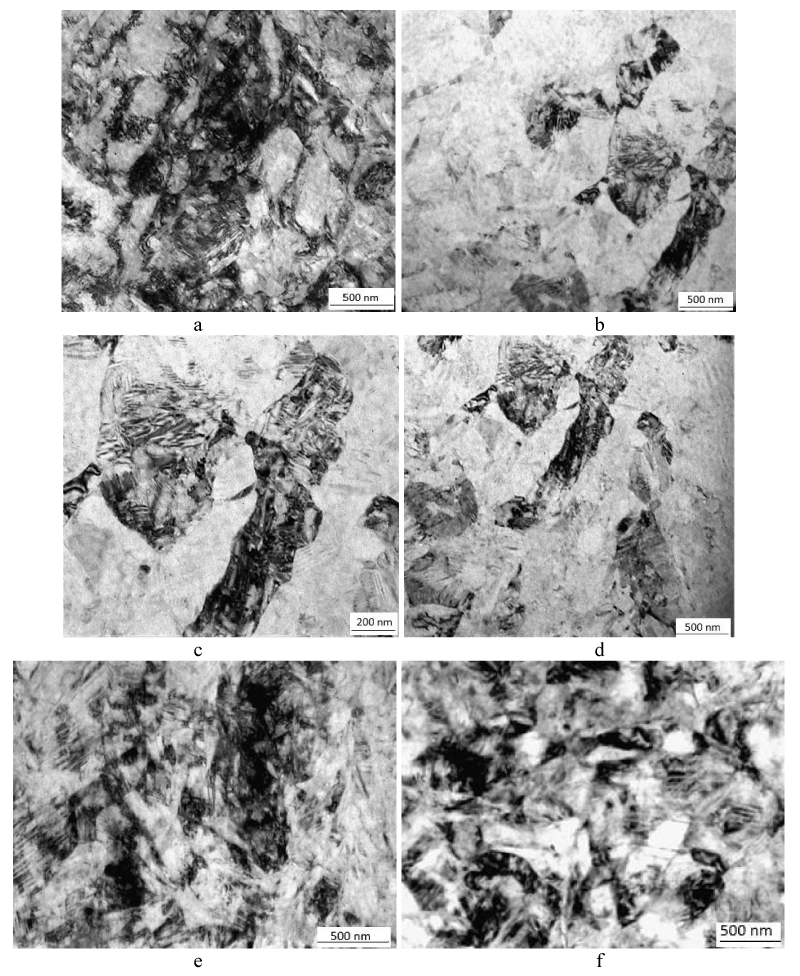
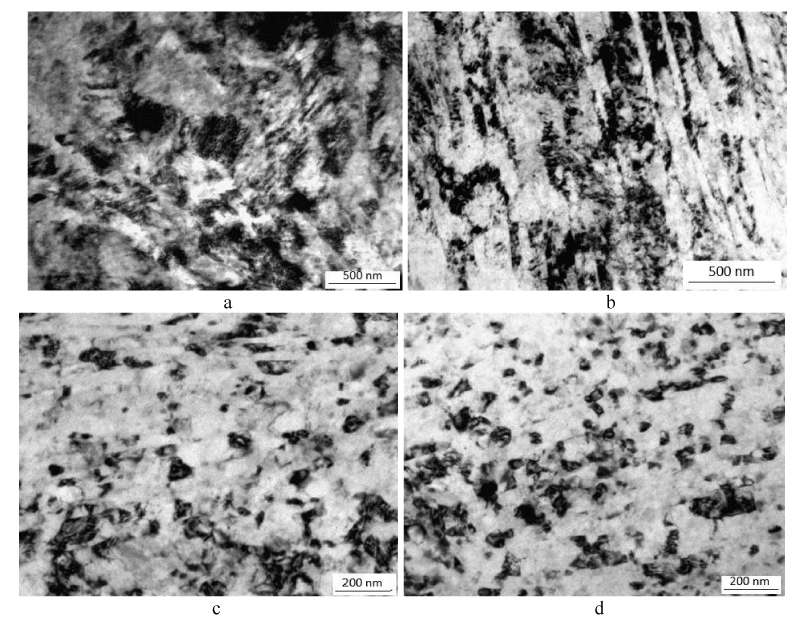


 Save to Mendeley
Save to Mendeley